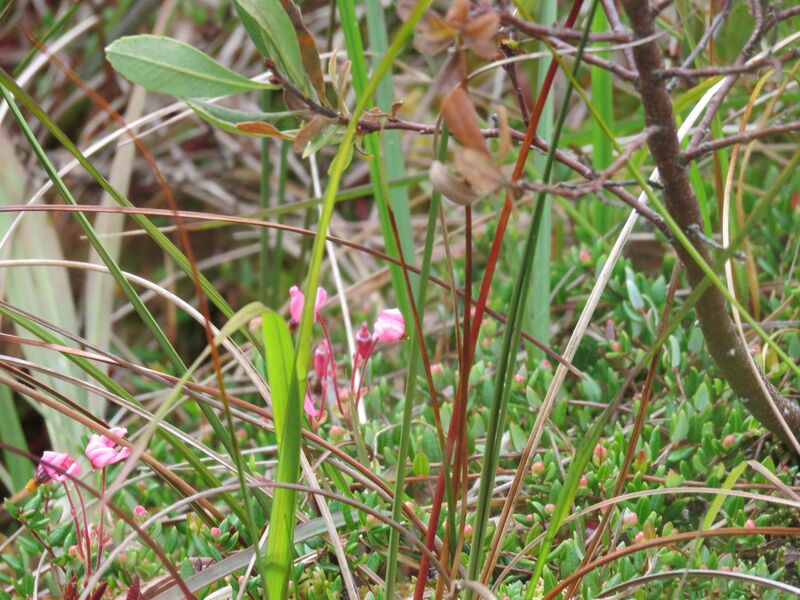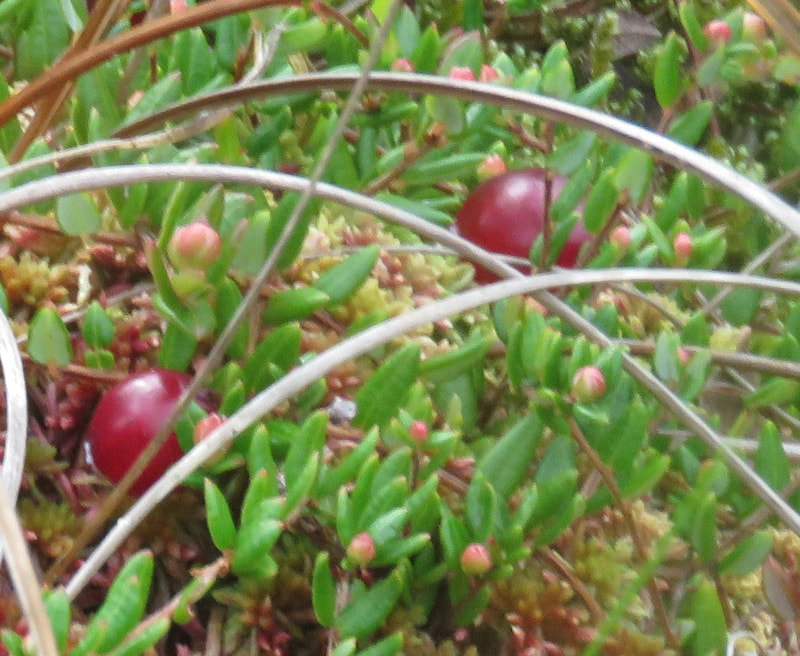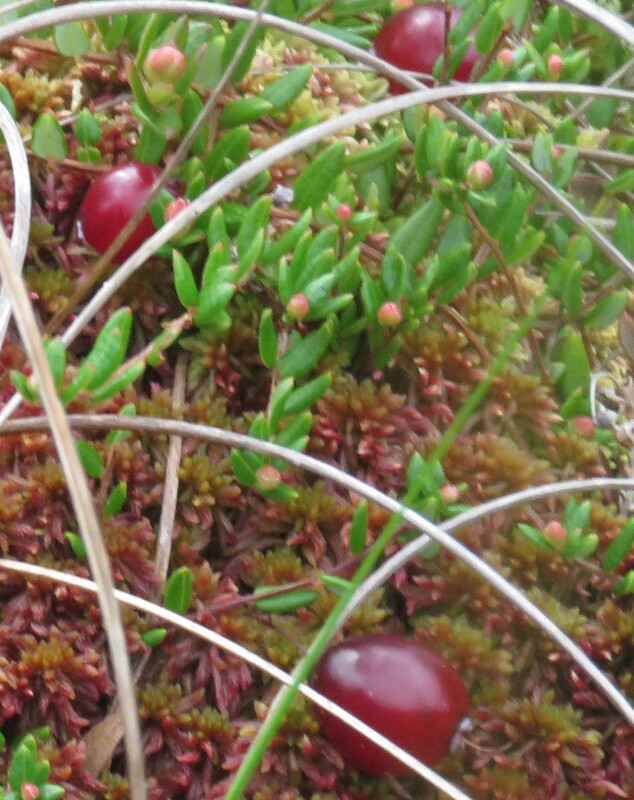 Cranberries and trailing evergreen leaves
Cranberries and trailing evergreen leaves From the board-walk we look beyond bog myrtle and heather, down onto wetter ground with sphagnum moss. Our location is Foulshaw Moss and here is the peat bog of a lowland raised mire. I reckon she’s found cranberries in a zone where sphagnum moss meets heather. And in a tangle of vegetation I glimpse tiny pink flowers – I had not expected to find cranberry flowering in early September. Here are flowers and trailing leaves, tiny pale green fruit and ripe red berries to be discovered.
Cranberry is a low-creeping evergreen sub-shrub. Its network of deep green leaves trails over the sphagnum mosses, often easier to see than its fruit which can nestle half-hidden in sphagnum and show as brownish and speckled or as rounded and glossy red. There are a few ripe red cranberries and many more unripe berries, pale green and pinkish, nestling in the sphagnum.
It's a delight to find cranberry in fruit and flower at Foulshaw and to share the find- I knew what they were but would not have seen them, they’re well hidden. Cumbria Wildlife Trust wouldn't want visitors to step off the boardwalk, to protect the flora but also to protect ourselves. Foulshaw and Roudsea Mosses have hidden peat-workings, unpredictably deep and sometimes flooded.
My first and best cranberry find on the fells exists only in memory, I was a fell walker and naturalist but I took photographs in a more casual way so I have no record of what I then saw. In a watershed zone there were hummocks of sphagnum moss and a net of trailing cranberry stems was spread over them, I've never seen so many cranberries. The green leaves on those long trailing stems will turn red later in autumn so the plant is beautiful through the seasons .



















 RSS Feed
RSS Feed